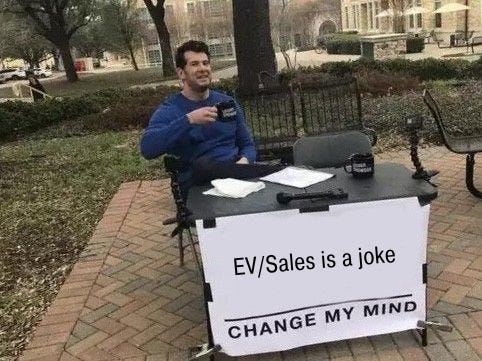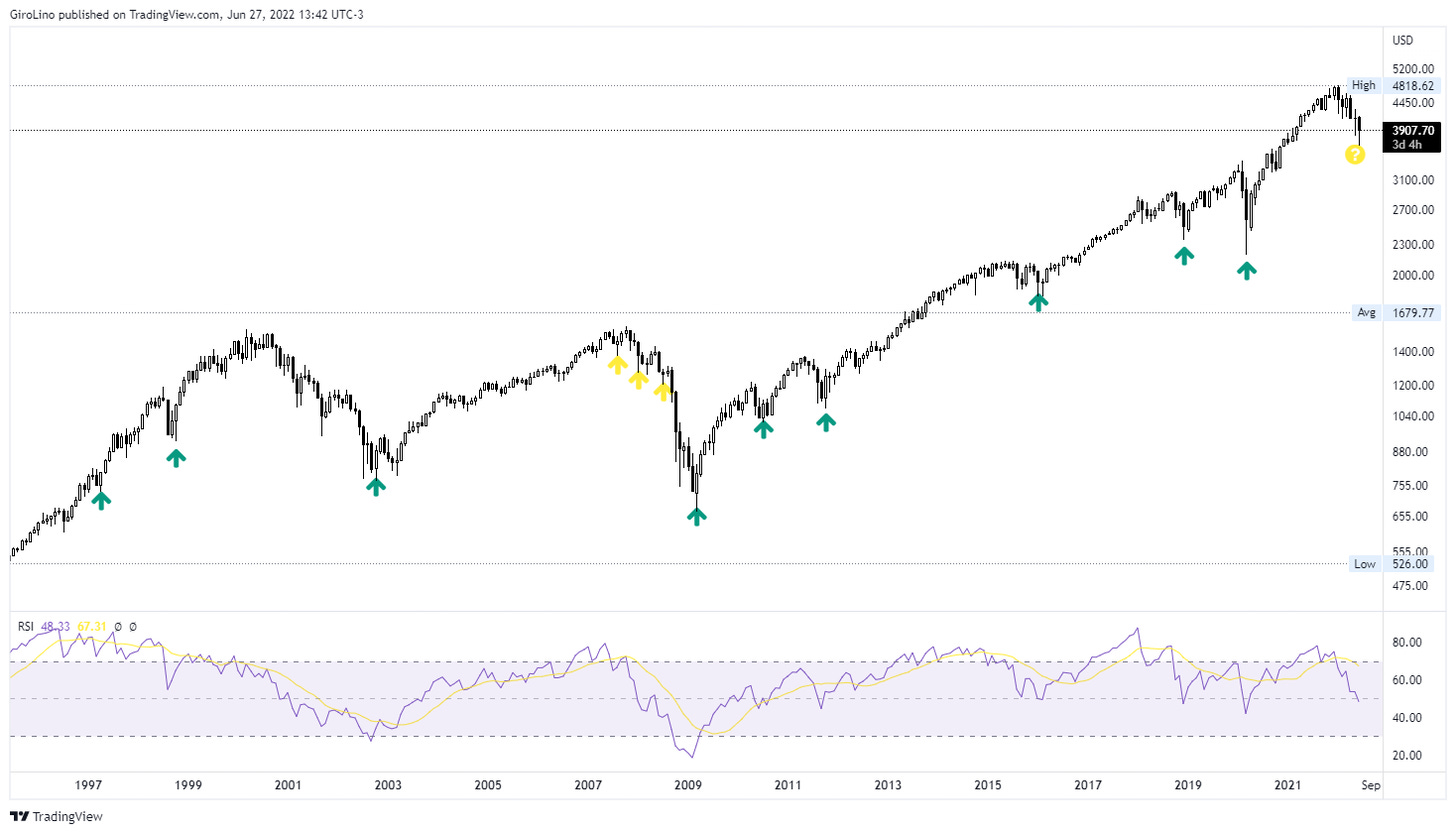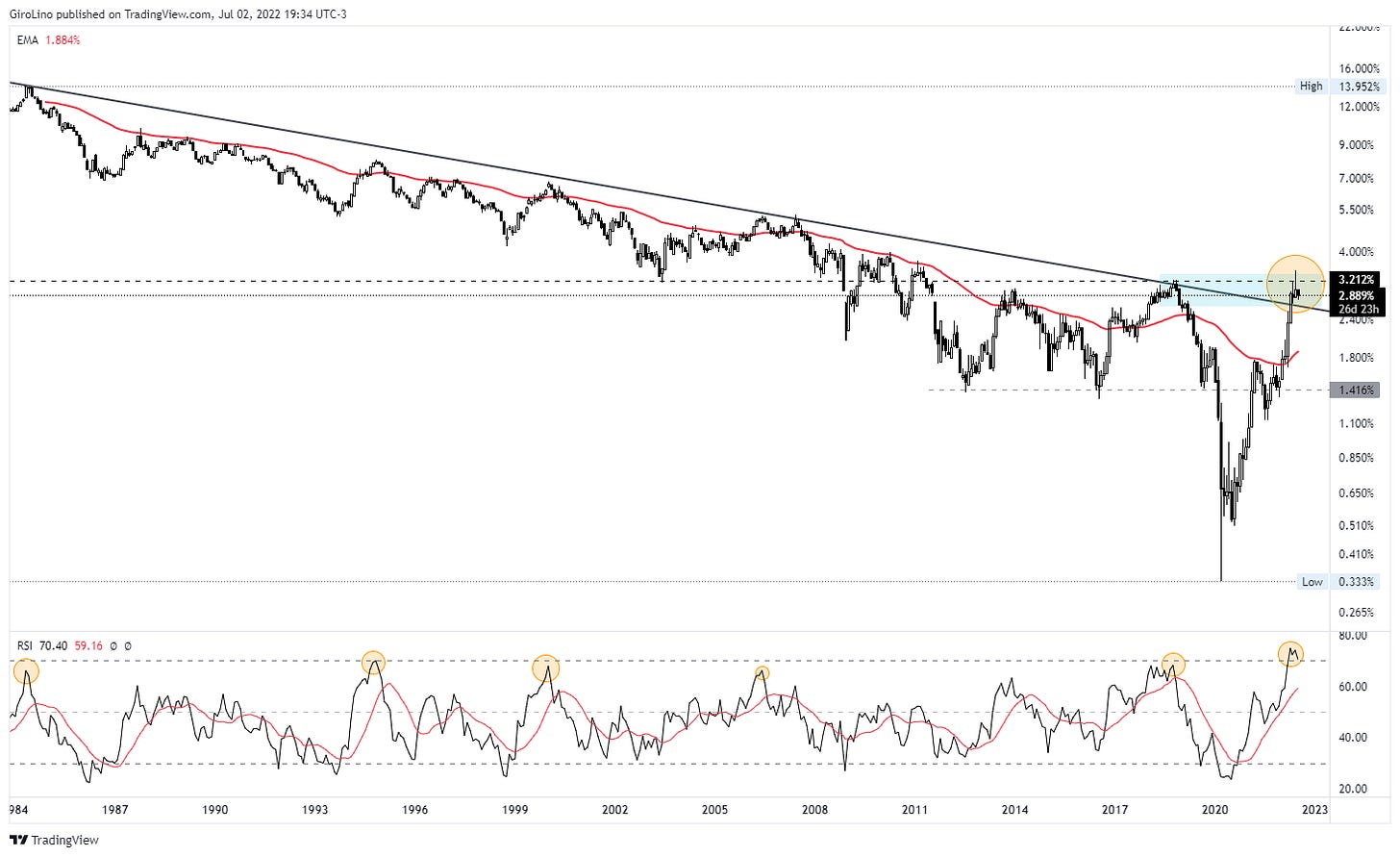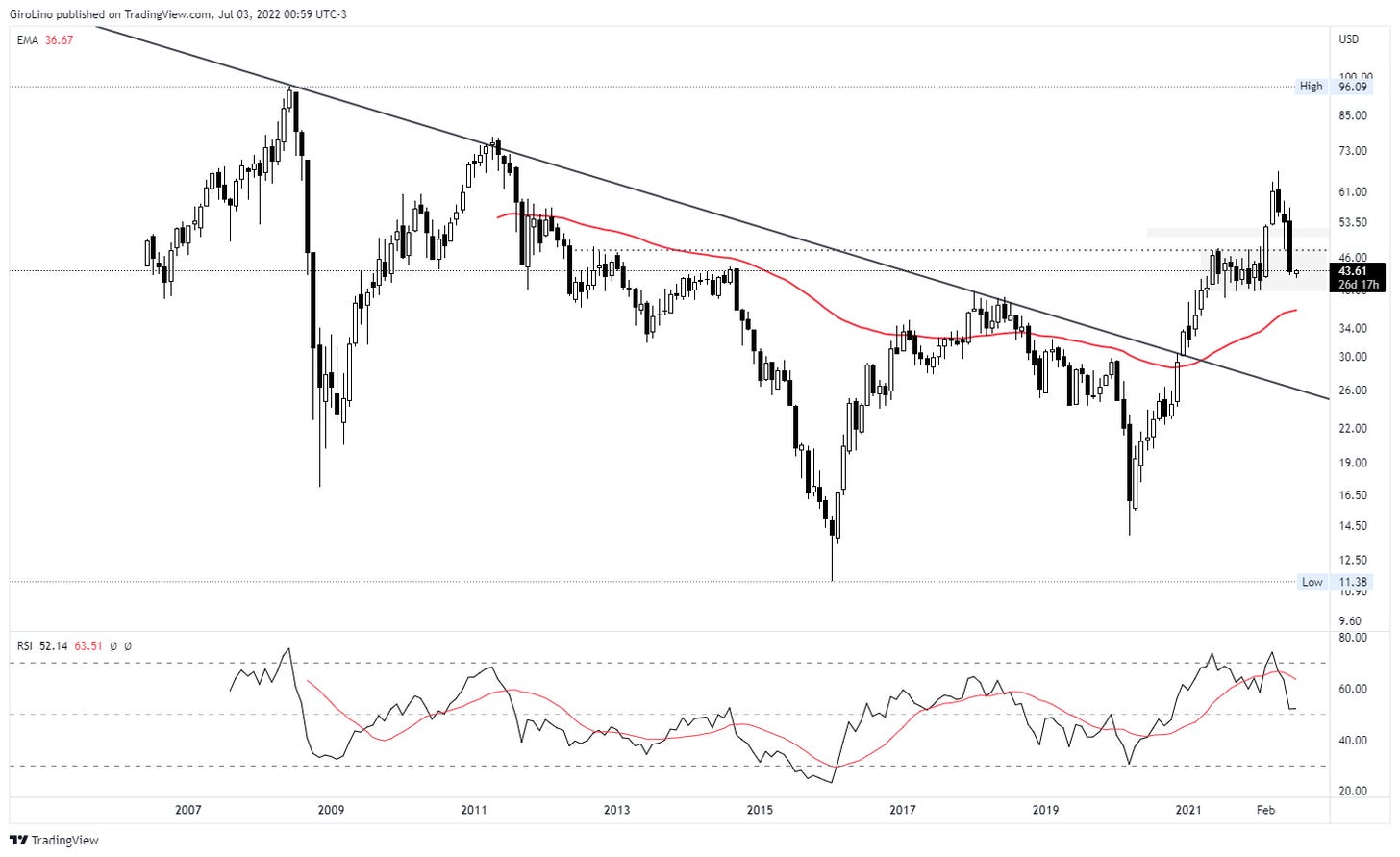Today’s post is presented by Stratosphere.io:

Today’s outline
- Fintech Dilemma
- Base Case for 2H22
- BRICS Summit
- Silent Bull Market…
- … And the Noisy One
Fintech Dilemma
After being valued at US$45.6 billion in June of 2021, WSJ reported that Klarna is close to announcing a new offering at a US$6.5 billion valuation — ~85% permanent impairment of capital in a year.
After failing to get significant traction, trying an offer at a US$20-US$25 billion valuation and cutting 10% of its more than 7,000 workforces, the management finally accepted a realistic valuation.
Contrary, in a rare appearance, David Vélez, Nu’s CEO, gave an interview to the FT. While many fintechs appear desperate to raise cash, Nu is out hunting for accretive M&As. According to the CEO:
“Some of the M&A conversations we had 12 months ago are coming back at a 70 percent discount . . . We’ll be looking to do more M&A.”
For the market, the reduced valuation reflects a more comprehensive route in the fintech space. In addition, surging inflation has led investors to take a more cautious approach, stemming the flow of easy money.
However, operating in LatAm has always been the survival of the fittest. Those companies never saw more than four years of stability without inflationary pressure and wealth destruction.
Nu issued its first transactional card in 2014. It took four years for them to get a financial institution license, which happened by presidential decree — thanks, President Temer.💖
Yet, the Brazilian Central Bank obligated Nu to keep an RWA above incumbent banks, even though the company reports under the IFRS9, which binds them to provision losses upfront. For thriving for almost a decade, being average isn’t enough.
Most credit fintechs that received massive funds after Covid-19 underestimated the risk of scaling up a credit operation.
Unintentionally, the regulatory constraints might have helped Nu. It took so long for them to operate the credit business that they had enough time to streamline the underwriting policy and build up their own credit bureau. Ironic.
Nevertheless, focusing on developing the product before investing aggressively in growth was right. Still, management takes only half of the blame.
The modus operandi in the VC industry is very well known. You invest in a company wondering about the subsequent funding round. For early-stage companies, that makes perfect sense. Otherwise, if you seed a company that never raises funds again, it’s worth zero.
What changed in the last years was how capital market analysts analyze growth stocks. They started evaluating those firms as VCs. That is a gross mistake.
But analysts are not totally wrong. As a buy-side analyst, you have 15-30 companies under coverage. How the heck will look each one individually with the necessary granularity and short deadlines.
The industry is wrong. The complexity of evaluating companies increased significantly in the past decade, although deadlines became shorter year after year.
Honestly, no idea what the solution is, but we hope the recent drawdowns might have worked as a wake-up call for PMs and GMs. EV/Sales is a joke.

Base Case for 2H22
For the 2H22, there are a few charts investors should keep warry of. The S&P 500 Index tries to build upon the initial rebound from the extreme oversold conditions realized last week.
The deeply oversold conditions and bullish momentum divergence signals already in place imply an increased probability for additional upside into July.
We recognize the divergence only plays for weekly charts, nevertheless. As in 2007, we should keep cautious without the confirmation of the monthly chart.

Slowly, we’re turning our attention back to gold companies. In January, we wrote about how the FED suggested that near-term risk increased, and prices should adjust to that given the uncertain path ahead, indicating consecutive hikes ahead.
Chair Powell clarified that FED’s job isn’t to set a floor to stock prices — the so-called FED Put. The problem is that, historically, FED’s decisions are influenced by stock prices and volatility.
In the following month, we wrote about the spread between 10yr and 2yrs maturity USTs have been pricing lower growth ahead.
Historically, if the curve stays under pressure, the FED creates the narrative that lower growth will help with inflationary pressure and, therefore, overblowing the hike's narrative.
In our opinion, and it’s no secret, the FED is screwed. Either the bond market will collapse with skyrocketing yields, or the currency will vanish because of money printing to support bond purchases.
The market has given the first sign we need.
After significant price moves throughout the year, the UST10Y closed well below the intra-month high, forming a pattern in the monthly chart called “inverted hammer.”


A word from today’s sponsor:

Stratosphere.io makes it easy to get the financial data you want and to develop beautiful out-of-the-box graphs for your research process. No more complex user interfaces, no more limited historical data. You will get access to:
- 10 years of historical financial data & customizable views
- Stock idea generation & snapshots
- Company-specific metrics
- Beautiful data visualizations

BRICS Summit
The Presidents of over 20 countries attended the BRICS summit, including Indonesia, Egypt, Iran, Algeria, Argentina, and Malaysia.
By contrast, the Summit of Americas held earlier this month in Los Angeles proceeded without Mexico, Cuba, Nicaragua, and Venezuela due to long-standing resentments with Washington.
Beijing’s message of non-interference in a country’s domestic affairs, international relations based on equality and mutual trust, and respect for territorial integrity and sovereignty.
After the meeting, Iran and Argentina applied to join the BRICS. The Chinese Foreign Ministry spokesman Zhao received the requests open-handed:
BRICS countries agreed that it is important to step up cooperation with other emerging markets and developing countries to improve the representativeness of the BRICS mechanism and make it loudly heard on major international issues so that we can better rise up to challenges and uphold the interests of emerging markets and developing countries.
This event has no impact in the short term, but China and Russia have been looking for allies proactively, and it looks that — slowly — they’re succeeding in doing so.
Also, our friends at International Intrigue did a great job picking up another essential highlight in their daily newsletter this week.
Russian President Vladimir Putin suggested the bloc develop its own reserve currency to protect the five economies from escalating geopolitical tensions.
The BRICS reserve currency would be comprised of a basket of roubles, reais, rupees, renminbi, and rand. (You're rrrrright to be wincing at the cavalcade of bad puns we'll come up with if this actually happens.)
While the idea of establishing a new reserve currency isn’t unthinkable, it’s far easier said than done. As our friends over at Lykeion noted in “What Would It Take for the USD to Lose its Reserve Status?”:
“Unseating a global reserve currency is the sort of process that happens over decades, not years, and usually has more to do with the decline of the dominant power (US) than the rise of a challenger (China).”
ING's global head of markets Chris Turner explains the thinking behind the proposal:
“This is a move to address the perceived US-hegemony of the IMF”, which “will allow BRICS to build their own sphere of influence and unit of currency within that sphere.”
Silent Bull Market…
On March 20th, we wrote that Chinese stocks had made a bottom after China’s State Council urged concrete measures to boost the economy, the first of many efforts that followed in the subsequent weeks.
Since then, Chinese stocks have outperformed the US Market by over 20%. We believe Beijing’s monetary and fiscal easing measures have key support.
Among all major economies, China has one of the lowest inflation rates. The PBOC is gearing up to implement its version of QE—using its balance sheet to support the financial sector and the economy.
The committee will manage the financial stability fund, financed by contributions from banks and other financial institutions, including infrastructure operators—such as securities clearing and settlement facilities.
This move reflects China’s authorities’ concerns about the risks that the ongoing debt resolution of Chinese real estate developers will spill into other sectors, threatening overall financial stability and slowing economic activity.
Most importantly, the fund will enjoy a liquidity backstop by the PBOC. The 2Q22 disappointed vs. market expectations due to the scale of Covid lockdowns but will mark a bottoming-out of growth.
Based on the last decade, we know what it means for equities to boost liquidity in a low-environment scenario. It’s hard to ignore the opportunity.
… And the Noisy One
The lack of inventory buffer for commodities leaves the market vulnerable to unplanned supply outages, such as the spiraling Libyan protests, worsening US crop conditions, and an active hurricane season that may shut down refiners in the Gulf of Mexico.
With physical stocks low relative to pre-pandemic levels, realized volatility has more than doubled. Surging volatility has, in turn, drained liquidity, limiting outright trading activity.
Amid strained liquidity, any small shocks to supply will continue to have an outsized impact on prices, as we’ve seen in the past weeks.
As we have discussed regularly, price-action in the metals and mining sector (XME) has provided valuable information regarding trends in several other key markets and sectors.
The XME pulled back from a recent break-out, trading in a consolidation region, reflecting many commodities. This will likely test investor conviction and could provide excellent opportunities to add to long-term positions.

Still, what remains critical is that the range of near-term price outcomes for commodities has become extreme given the strained liquidity.
For oil, this represents $140-150/bbl short-term upside, should oil eventually fall under Western secondary sanctions and total insurance ban.
In the case of agricultural prices, the upside scenarios for wheat ($15/bu) and corn ($12/bu) reflect the possibility of Ukrainian Black Sea ports remaining closed through 2022/23 and production elsewhere disappointing.



